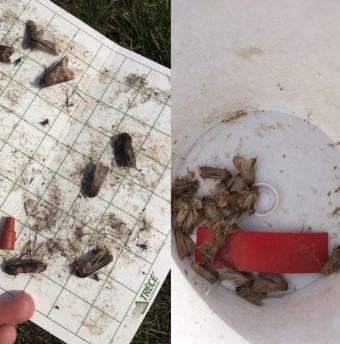OMAFRA warns to scout for black cutworm as plants emerge
About 30 per cent of Ontario’s total corn crop has been planted, according to OMAFRA’s May 18 Field Crop Report.
Corn planted in early April is at the two-leaf stage, but most of the early-planted corn is struggling to emerge, OMAFRA says.
But the corn that has emerged is susceptible to damage from black cutworm.
“Larvae will cut off the plant just below ground level and patches of affected plants will appear wilted from hollowed out stems,” says OMAFRA’s Field Crop Team. “Cutworm larvae can be found near affected plants below the soil surface.”

And recent weather means producers are planting corn into less than ideal conditions.
“The calendar is pushing some planting to occur in soils that are wetter than ideal,” writes OMAFRA’s Field Crop Team.
Soybeans
Soybean planting is progressing across the province, with crops planted three weeks ago knuckling but not quite emerging.
Planting will increase with warmer weather, OMAFRA suggests.
Producers should monitor slow-emerging fields for seedcorn maggot damage, especially where manure or cover crops have been placed.
Winter Wheat
Recent cool and wet weather has slowed the rate of wheat development to five to seven days ahead of normal.
Most crops are at the flag leaf sgatge, but development ranges from 1st node to heads emerging, OMAFRA says.
If fields are showing sulphur deficiency, consider applying nitrogen.
Stripe rust has been spotted in Oxford, Chatham-Kent, Elgin and Bruce Counties.
Canola is about 20 per cent planted across the province, OMAFRA says.